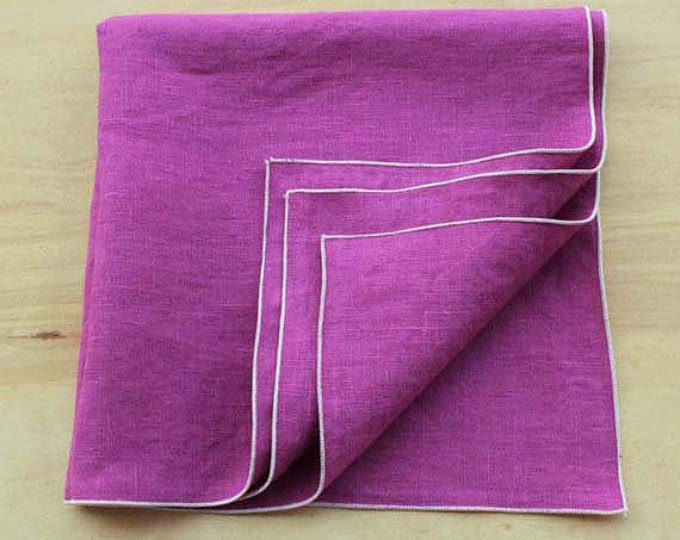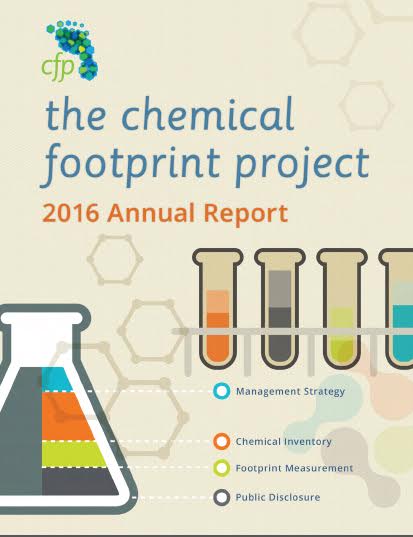
Water | Resources
Pharmaceutical Chemicals Found in Every Stream Sampled in USGS Study
Our waterways are filled with traces of drugs, says a new study conducted by the United States Geological Survey (USGS).
A team of researchersecently collected water samples from 59 small streams in the Southeast from Virginia to Georgia, which were analyzed for 108 pharmaceuticals and degrades.
All 59 streams tested positive for at least one of compounds and the overall average was six different compounds per stream.
The drug compounds ranged from common pain killers and antihistamines to medicines used to treat diabetes and seizures.
Metformin, a medicine used to treat Type II diabetes, was found in 89 percent of all sample taken, while acetaminophen, the active ingredient in pains killers such as Tylenol was detected in 36 percent of all samples. Nicotine-related compounds were found in 71 percent of samples, while caffeine-related compounds were found in 49 percent.
None of the chemicals was detected in amounts that exceeded human health benchmarks, but they can cause “toxicity, endocrine disruption, immunomodulation, antimicrobial activity, antibiotic resistance selection, cytotoxicity and mutagenesis, and transgenerational effects throughout aquatic foodwebs,” the study says.
Another study reported in Scientific American showed only about half of the prescription drugs are removed by the water treatment plants that supply our tap water.
Pharmaceutical Chemicals Found in Every Stream Sampled in USGS Study
SCIENTIFIC AMERICAN: Only Half of Drugs Removed by Sewage Treatment

Buying Toxic Free Clothing in Retail Stores
Question from Brittany
Hi Debra,
I am just learning about the toxins in our clothes. Are there any retail stores that follow these guidelines?
It’s just overwhelming! Don’t even know where to start. Everything is polyester.
Where do you shop?
Debra’s Answer
I wish there were such a store, but I haven’t found one yet. There may be boutiques and your can find such places online (see Debra’s List: Clothing page), but I can’t direct you to any major clothing store, And yes, I agree, it seems like everything is getting to be polyester again. Not too long ago there were a lot more natural fibers.
I buy all my clothing in retail stores, but I have to choose carefully.
I live in Florida so most of the time I am wearing cotton capri pants and tank tops. These are easy to find almost anywhere.
I would buy organic natural fibers if I could find and afford them.
But my general rule of thumb is to buy natural fibers—cotton, linen, silk, wool—and in particular no permanent press because it releases formaldehyde. No synthetic fibers, not even 1 percent. My favorite fabric is linen, which is perfect here in my tropical climate.
I also have been known to make my own clothes and have been considering having others make clothing for me. I have made evening gowns and wedding dresses out of beautiful natural fiber fabrics because I refused to wear the synthetic fabrics most formal wear is made from.
I live in Florida so my stores may be different from yours. And I don’t have a lot of choices. I look at Sears and Penny’s and Dillards and Macy’s. Often these stores will have natural fibers, but mostly not. I find things at Ross and TJ Maxx. Just great random pieces that are inexpensive. But they are getting harder and harder to find.
Readers, what is your shopping experience? Where and how to you buy your clothes?
US Government Study Finds Cell Phones Cause Cancer
A multi-year $25 million study done by the National Toxicology Program found “low incidecences” of two types of tumors in male rats exposed to the same type of radio frequencies commonly emitted by cellphones.
It was one of the biggest and most comprehensive experiments into the health effects of cell phones.
“Where people were saying there’s no risk, I think this ends that kind of statement,” said Ron Melnick on seeing the results. He ran the NTP project until retiring in 2009.
WALL STREET JOURNAL: Cellphone-Cancer Link Found in Government Study
New Study Shows Glyphosate in 93% of Americans Tested
In a unique public testing project carried out by a laboratory at the University of California San Francisco (UCSF), glyphosate was discovered in 93% of urine samples during the early phase of the testing in 2015.
The urine and water testing was organized by The Detox Project and commissioned by the Organic Consumers Association.
The unique project, which has already provided more urine samples for testing than any other glyphosate bio-monitoring urine study ever in America, was supported by members of the public, who themselves paid for their urine and water samples to be analyzed for glyphosate residues by the UCSF lab. These subjects were self-selected volunteers who contacted The Detox Project asking for testing.
The data released in a presentation by the UCSF lab only covers the first 131 people tested. Further data from this public bio-monitoring study, which is now completed, will be released later in 2016.
THE DETOX PROJECT:
UCSF Presentation Reveals Glyphosate Contamination in People across America
Due to overwhelming response, testing of body fluids for the presence of glyphosate has been temporarily discontinued while arrangements are being made with a larger lab. If you wish to have this testing, you may do so when the project restarts later this summer.
Camden Rose
 Natural toys and home goods for environmentally conscious families. “We believe it is possible to raise healthy children without the harmful toxins and electronic influences that challenge today’s families.” and so this couple began to design and make their own toys, inspired by the natural toys made in Europe. “Camden Rose natural toys are made from wood, wool, silk, and cotton. Children love these materials because they have a warm, honest quality that appeals to the senses. Unlike plastic, they do not impart a false impression of weight, mass, or touch. Imbued with the life force of trees, plants, and living creatures such as honeybees, our toys are lovely to touch and behold.” No plastics.
Natural toys and home goods for environmentally conscious families. “We believe it is possible to raise healthy children without the harmful toxins and electronic influences that challenge today’s families.” and so this couple began to design and make their own toys, inspired by the natural toys made in Europe. “Camden Rose natural toys are made from wood, wool, silk, and cotton. Children love these materials because they have a warm, honest quality that appeals to the senses. Unlike plastic, they do not impart a false impression of weight, mass, or touch. Imbued with the life force of trees, plants, and living creatures such as honeybees, our toys are lovely to touch and behold.” No plastics.
KSTYLEDESIGN
 Beautiful, colorful, embroidered linen napkins and placements, custom made just for you. Monograms, colored borders…I love linen and want them all. High quality European linen.
Beautiful, colorful, embroidered linen napkins and placements, custom made just for you. Monograms, colored borders…I love linen and want them all. High quality European linen.
Weber Company
 Custom solid wood cabinets and furniture, handcrafted in Lodi, California. Your choice of wood, can order unfinished and apply your own nontoxic paint or finish. They can make any style to your specifications.
Custom solid wood cabinets and furniture, handcrafted in Lodi, California. Your choice of wood, can order unfinished and apply your own nontoxic paint or finish. They can make any style to your specifications.
Non-Toxic Safe Bicycle Helmets
Question from Grace
Hi Debra,
I am looking to start bike riding again and wondered if helmets were generally non-toxic and safe for someone with MCS? Are there any brands you recommend?
Thanks.
Debra’s Answer
Well it only took 30 seconds to find out the materials used because someone had already compiled all the information at How Bicycle Helmets are Made. This website has a lot of information about helmets, but unfortunately not a list of least toxic helmets.
The liners are molded from Expanded Polystyrene (EPS) which is the same material used to make coffee cups. Years ago styrene was found in the blood of almost 100 percent of people tested. This part of the helmet is mostly made in China. Other foams are used as well, and they have a separate page just for Bicycle Helmet Liners: Foam and Other Materials.
“Polystyrene contains the toxic substances Styrene and Benzene, suspected carcinogens and nurotoxics that are hazardous humans.” Polystyrene Fast Facts, Harvard University.
The hard shell is PET (the plastic used for bottled water containers). It is glued to the liner, so there may be some toxic adhesive there. More expensive helmets have shells made of polycarbonate (that’s the plastic that contains BPA).
I’m just going to stop here. I think you get the idea. Many more chemicals are mentioned in this article.
I know this is a safety thing to wear a helmet, and in some states they are required by law for children, but not for adults.
A helmet could be manufacturered from nontoxic materials, but it seems that everyone thinks they are OK.
Eco-Friendly Travel Trailer
Question from TA
Hi Debra,
I just came across this cute eco-friendly travel trailer made with non-toxic materials, composting toilet, etc.
I thought you might like to know about it. (I admit I just did a quick skim and didn’t check into all the details about materials and such, but did see the claim of non-toxic materials).
I know the subject of safe campers has come up before on the Q&A. Obviously, the price of this isn’t something that everyone can rush out and by. 🙂 But for those who are looking for something like this, or even those who are looking for safe living quarters, might be happy to know about it.
It doesn’t appear to have a shower, but it’s pretty cute. 😉
I don’t know how long they’ve been in business; it looks like they just have this one model right now, so I wonder if down the road they’ll have more options available (perhaps including a shower or other bed configurations, as most of us wouldn’t need bunk beds).
At any rate, it seems worth checking out and surely has to be better than all the “regular” brands that are available. And it would certainly draw attention from others, I suspect, since it’s very unique looking.
By the way, they do rentals in the Pacific Northwest. So even if a person can’t buy one, renting might be an option if a person needs safe travel accommodations in that area of the country. I’d definitely look into it if I ever travel to that area again.
Debra’s Answer
That IS cute! Couldn’t resist showing you the picture. I didn’t see a list of materials, but it does say “No toxic chemicals or VOCs.” How great!

Corporate Progress Toward Safer Chemicals
 Last week, the Chemical Footprint Project has published its inaugural report — the first initiative of its kind to publicly benchmark corporate chemicals management..
Last week, the Chemical Footprint Project has published its inaugural report — the first initiative of its kind to publicly benchmark corporate chemicals management..
The results provide valuable insights into how leading companies manage chemicals in their products and supply chains, and how all companies might manage these issues in the future.
Last year, a select group of 24 leading-edge businesses both small (millions in annual revenue) and large (tens of billions in annual revenue) stepped forward to participate in the Chemical Footprint Project and to receive a score on their corporate chemicals management practices. Participants included: Levi Strauss & Co.; Seagate Technology, PLC; Johnson & Johnson; GOJO Industries; Becton, Dickinson and Company; Beautycounter; and California Baby, among others.
The report analyzes participants’ responses to a 20-question survey regarding chemicals management across four categories: Management Strategy, Chemical Inventory, Footprint Measurement, and Disclosure & Verification. Key findings include
- Senior leadership matters: The 29% of firms with Board-level oversight or senior management incentives performed better overall than firms with no such accountability.
- Companies need comprehensive policies: Without policies that address chemical hazards in manufacturing, supply chains, and packaging – in addition to products – companies face hidden liabilities and chemical risks.
- Disclosure lags practice: Across every category – Management, Inventory, Footprint, and Disclosure – companies have more chemicals management practices in place than they share publicly. For example, 83% have a legally restricted substances list, but only 17% of those companies make that list public.
- “Design for Health” sets leading edge: companies whose entire product portfolios are based on minimizing or eliminating chemicals of high concern performed well above average.
- Chemical footprint measurement is new and challenging: Before they can reduce their chemical footprints, companies need to know the chemical ingredients in their products and identify chemicals of high concern, so it’s no surprise that in this first year, companies scored low for measuring baseline chemical footprint.
The Chemical Footprint Project (CFP) was launched in 2014 with the support of investors representing $2.3 trillion in assets under management and institutional purchasers with over $70 billion in purchasing power. Similar to carbon footprinting, the project applies clear and consistent metrics to help purchasers select suppliers based on how they manage their chemical footprint. These metrics also enable investors to integrate chemical risk into their sustainability analyses and investments.
“You can’t manage what you don’t measure,” said Dr. Mark Rossi, Executive Director of the nonprofit Clean Production Action and one of the project’s founders. “By scoring companies on their overall progress in avoiding Chemicals of High Concern and using safer alternatives, the Chemical Footprint Project fills a critical missing piece in the sustainability mosaic for investors, purchasers, and other stakeholders.”
Companies participating in the survey see not only an opportunity to improve their performance on environmental measures, but ultimately to reap business benefits like increased sales and market share, higher rates of customer loyalty and employee satisfaction, and lower compliance costs.







